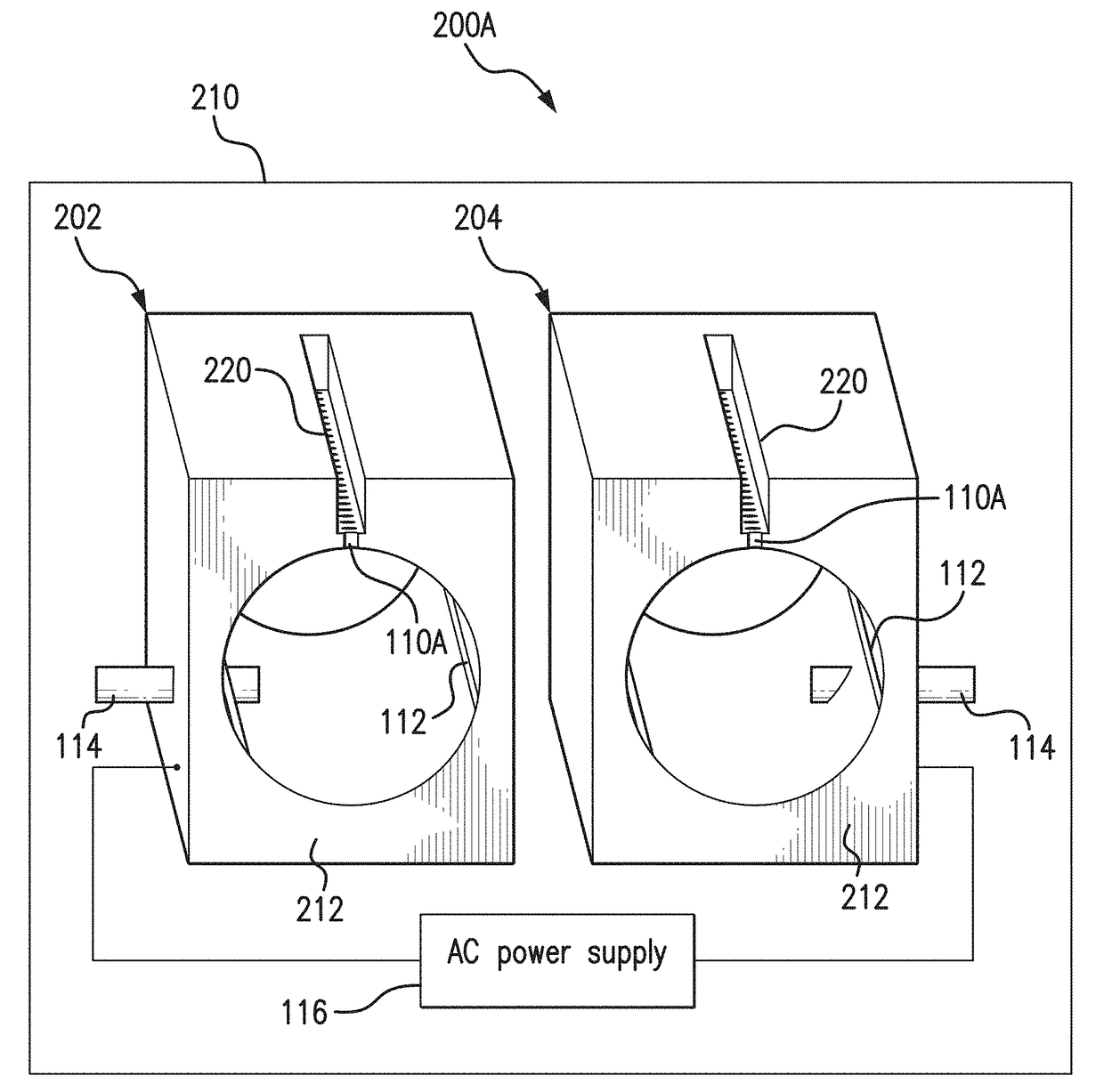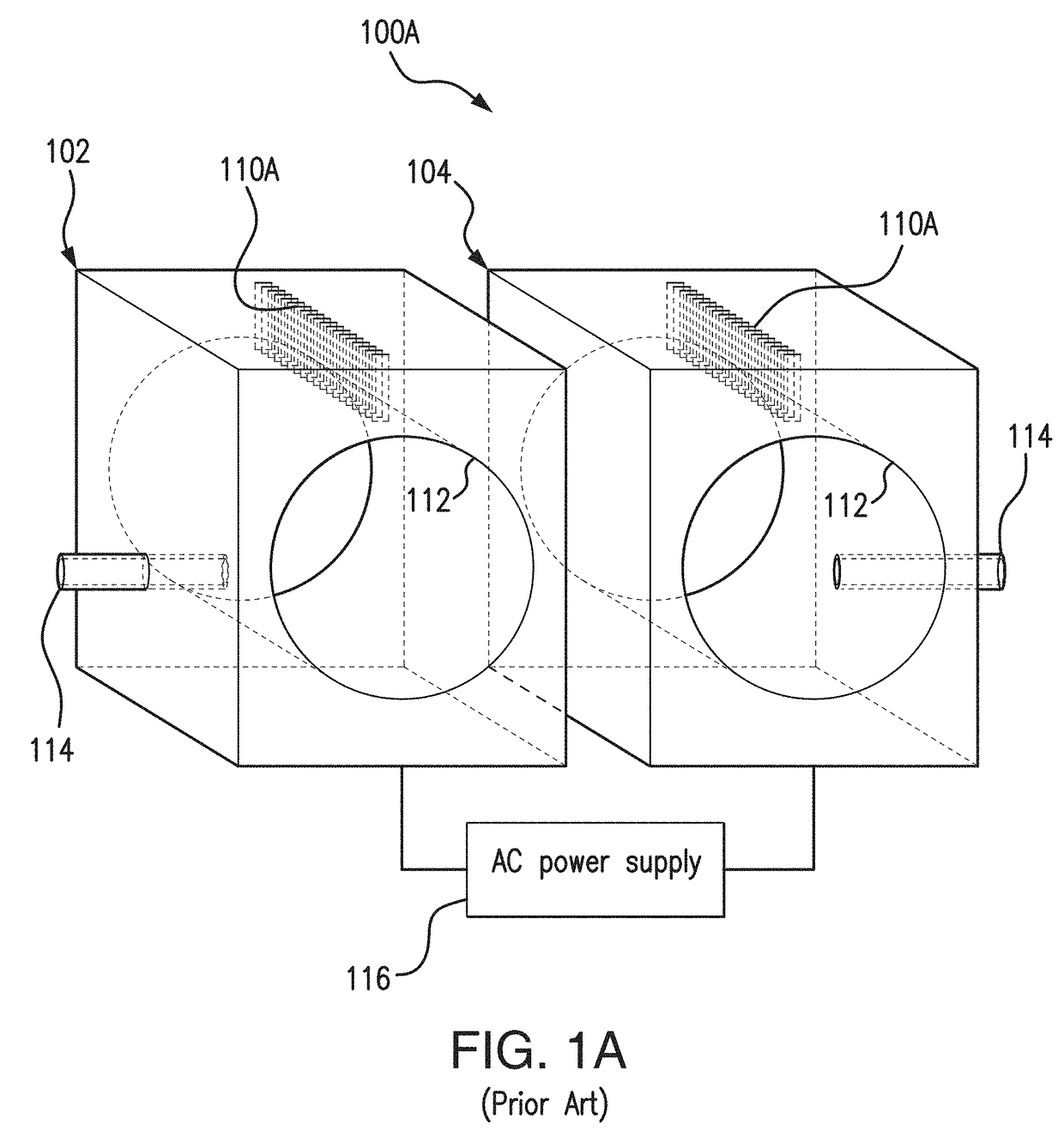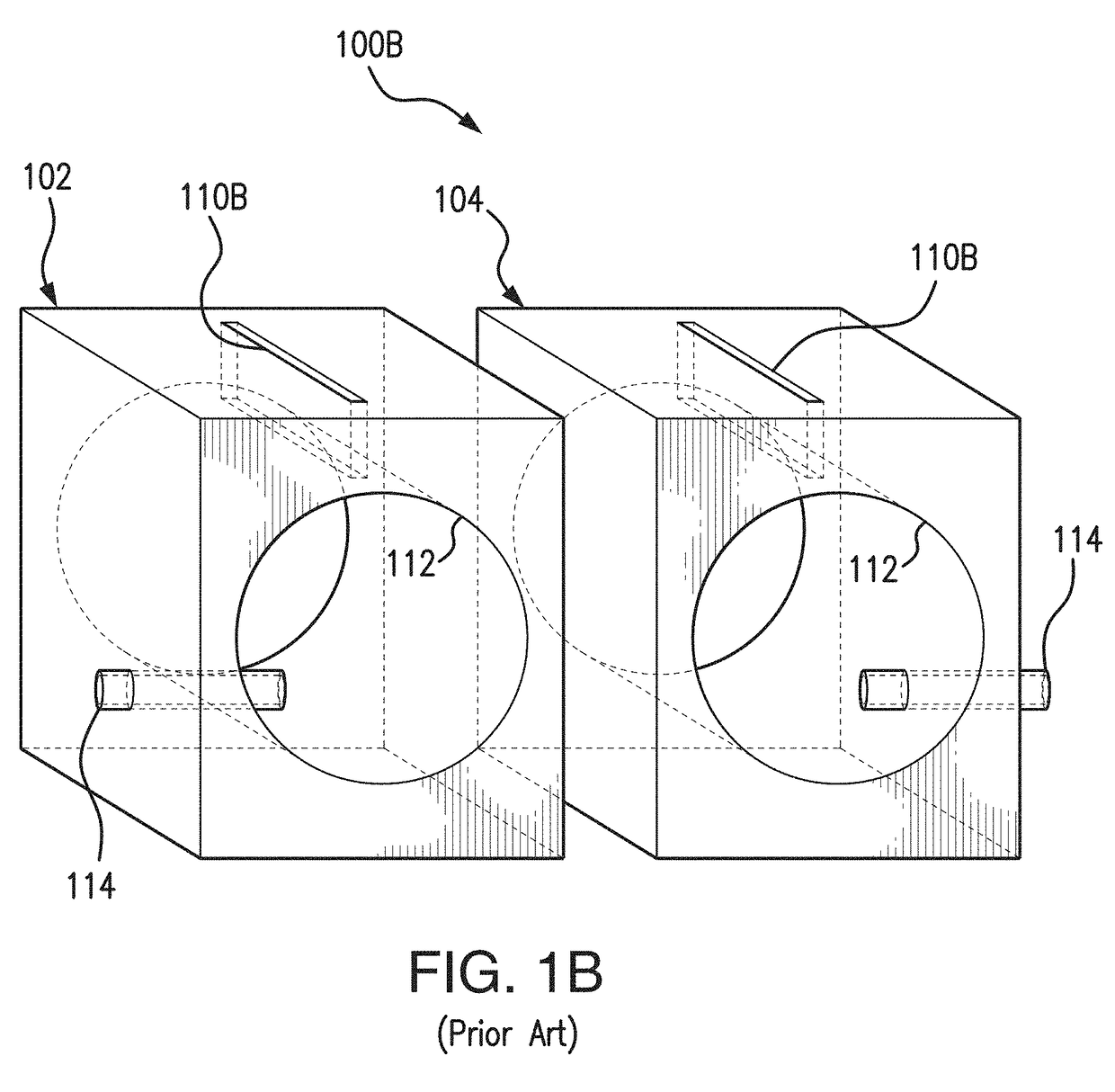Hollow cathode ion source
a technology of hollow cathode and ion source, which is applied in the direction of basic electric elements, electric discharge tubes, electrical apparatus, etc., can solve the problems of adding additional components to problems with vacuum hardware or processes, and the use of neutralizers, etc., to achieve the effect of improving the overall ion source and reducing the cost of production
- Summary
- Abstract
- Description
- Claims
- Application Information
AI Technical Summary
Benefits of technology
Problems solved by technology
Method used
Image
Examples
Embodiment Construction
[0043]FIGS. 1A, 1B, and IC, illustrate known hollow cathode plasma sources 100A, 100B, 100C. As shown in FIG. 1A, hollow cathode plasma source 100A includes a first linear hollow cathode 102 and a second linear hollow cathode 104, each connected to power source 116. Each linear hollow cathode 102, 104 includes an interior hollow cathode cavity 112 and a gas inlet 114 to allow plasma-forming gasses to enter into the hollow cathode cavity 112. Additionally, the hollow cathodes 102, 104 include a plasma exit region. As shown in FIG. 1A, the plasma exit region consists of an array of holes or nozzles 110A leading from the hollow cathode cavity 112 to the process chamber that houses the hollow cathodes. As shown in FIG. 1B, the plasma exit region consists of a single slot 110B in the hollow cathode body. FIG. 1C shows a tubular or cylindrical point hollow cathode plasma source, including tubular hollow cathodes 102C, 104C each having a hollow cathode cavity 112C and a gas inlet 114C, ana...
PUM
 Login to View More
Login to View More Abstract
Description
Claims
Application Information
 Login to View More
Login to View More - R&D
- Intellectual Property
- Life Sciences
- Materials
- Tech Scout
- Unparalleled Data Quality
- Higher Quality Content
- 60% Fewer Hallucinations
Browse by: Latest US Patents, China's latest patents, Technical Efficacy Thesaurus, Application Domain, Technology Topic, Popular Technical Reports.
© 2025 PatSnap. All rights reserved.Legal|Privacy policy|Modern Slavery Act Transparency Statement|Sitemap|About US| Contact US: help@patsnap.com



